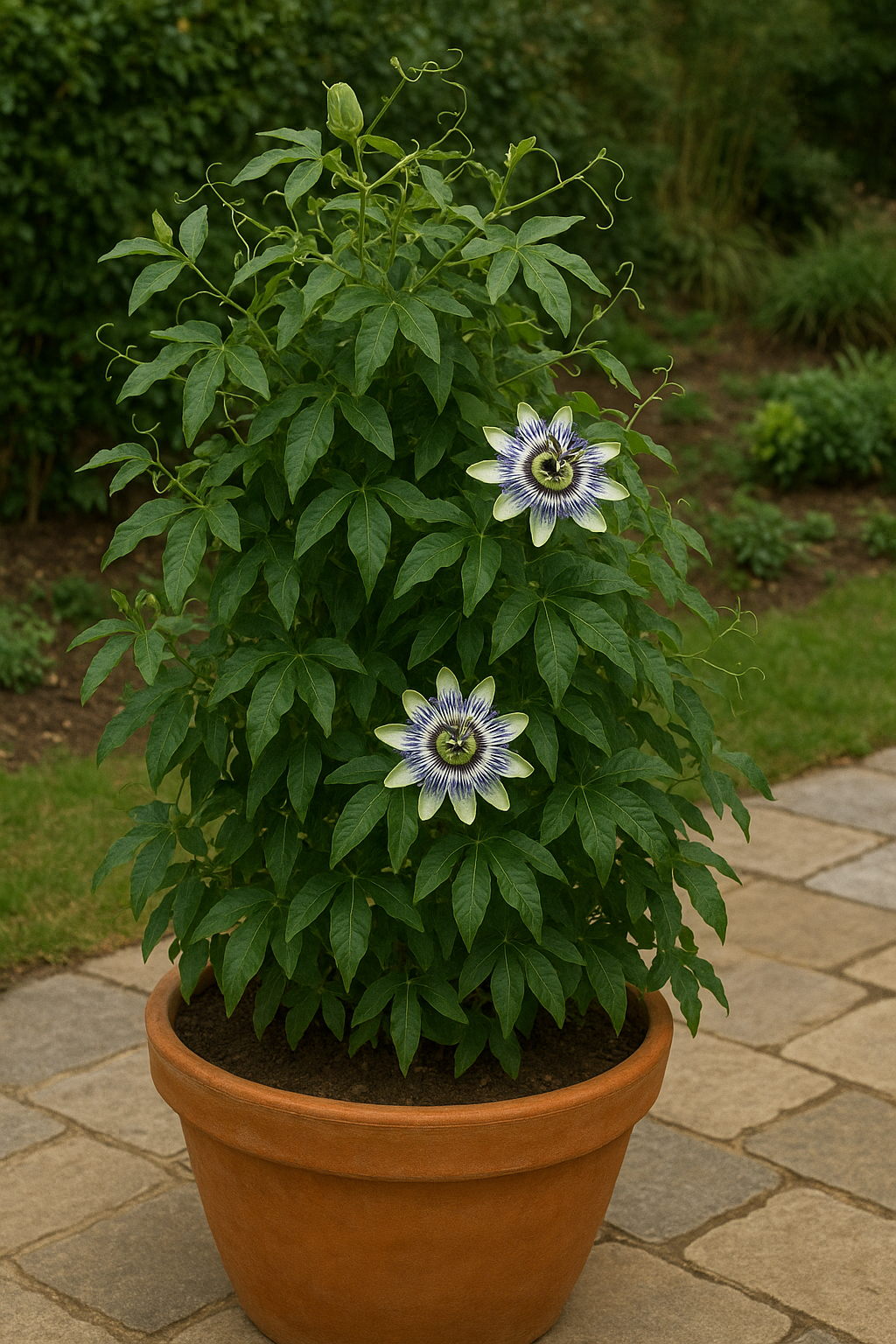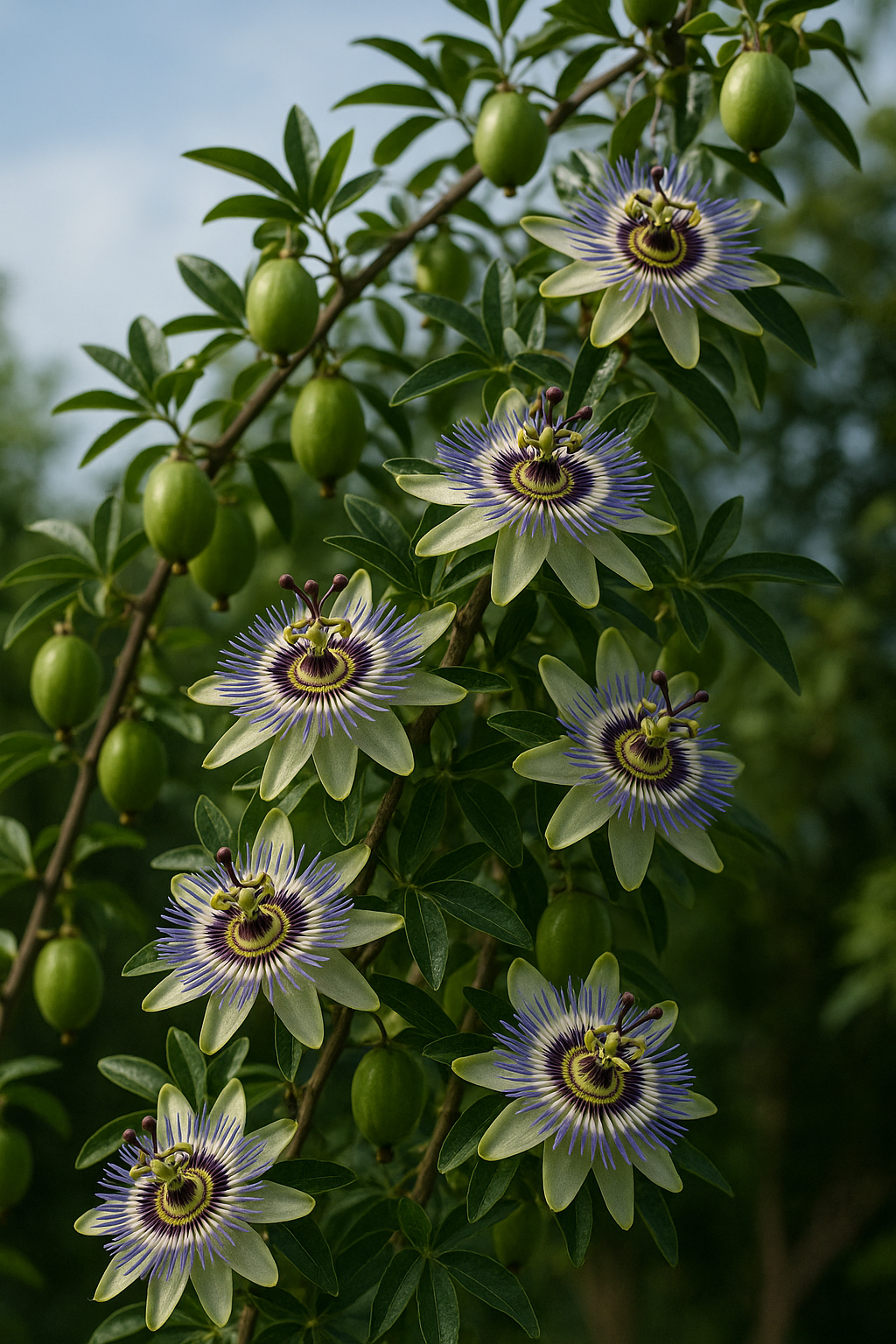Passionflower (Passiflora)
Passiflora spp. • Passifloraceae Family
Passionflowers are exotic climbing vines with some of the most intricate and beautiful flowers in the plant kingdom. With their unique structure representing the Passion of Christ, these vines also produce edible fruits and have medicinal properties.
Best Propagation Method
Stem Cuttings - Reliable for exotic blooms!
Take 4-6 inch softwood or semi-hardwood cuttings from healthy, non-flowering stems in spring or early summer
Cut just below a leaf node at a 45° angle using clean, sharp pruning shears
Remove leaves from the bottom half of the cutting, leaving 2-3 leaves at the top
Dip the cut end in rooting hormone powder to encourage faster root development
Fill a small pot with well-draining propagation mix (equal parts perlite and peat moss works well)
Make a hole in the medium with a pencil and insert the cutting, ensuring the node is buried
Water thoroughly and allow to drain completely
Cover with a clear plastic bag or dome to maintain humidity, using stakes to keep plastic off leaves
Place in bright, indirect light at 70-75°F (21-24°C) - avoid direct sunlight
Mist regularly and keep soil consistently moist but not waterlogged
Roots typically form in 3-6 weeks - gently tug to check for resistance indicating root formation
Once rooted, gradually remove the plastic covering over several days to acclimate the cutting
Transplant to a larger pot with regular potting soil once roots are well established
Light Requirements
Full sun to partial shade depending on species and climate. Most need at least 4-6 hours of direct sunlight daily for best flowering.
Watering
Regular watering to maintain consistent moisture. Allow top inch of soil to dry slightly between waterings. More water during flowering and fruiting.
Soil Requirements
Rich, well-draining soil with plenty of organic matter. Slightly acidic to neutral pH (6.0-7.0) is ideal for most species.
Temperature
Varies by species - tropical types (P. edulis) prefer 65-85°F (18-29°C) and are frost-tender. Hardy types (P. incarnata) can survive down to USDA Zone 5 (-20°F/-29°C).
Most passionflowers bloom for just one day - enjoy them while they last!
Many species are important host plants for butterfly larvae, especially Gulf Fritillary butterflies
Some species can spread aggressively via underground runners - consider container growing
Regular pruning after flowering encourages bushier growth and more blooms
Hand pollination with a small paintbrush can increase fruit set, especially for indoor plants
Even hardy species benefit from winter mulch in colder regions
P. incarnata has traditional medicinal uses for anxiety and insomnia
Ripe passion fruits wrinkle slightly when ready to harvest - they don't ripen well off the vine



